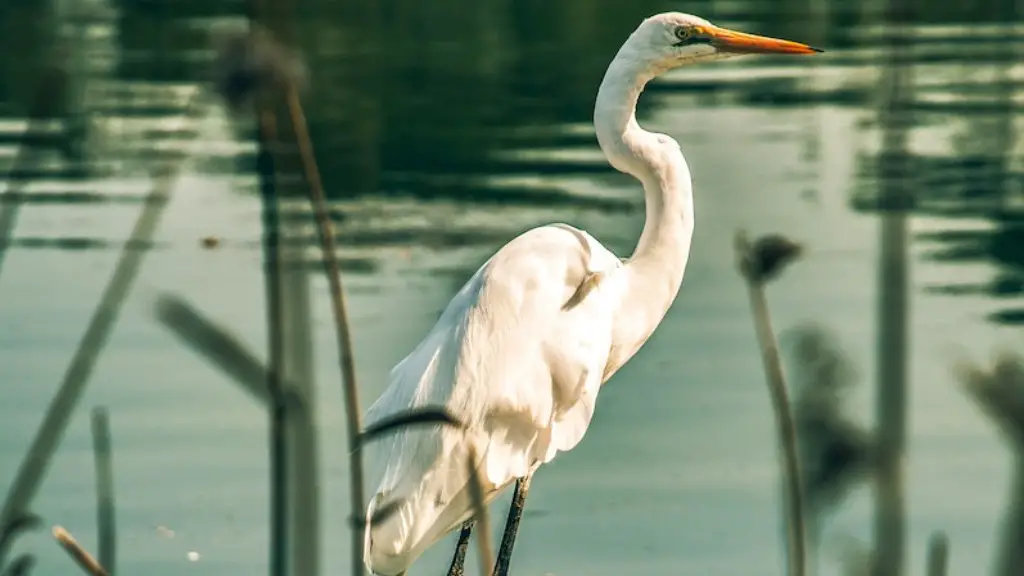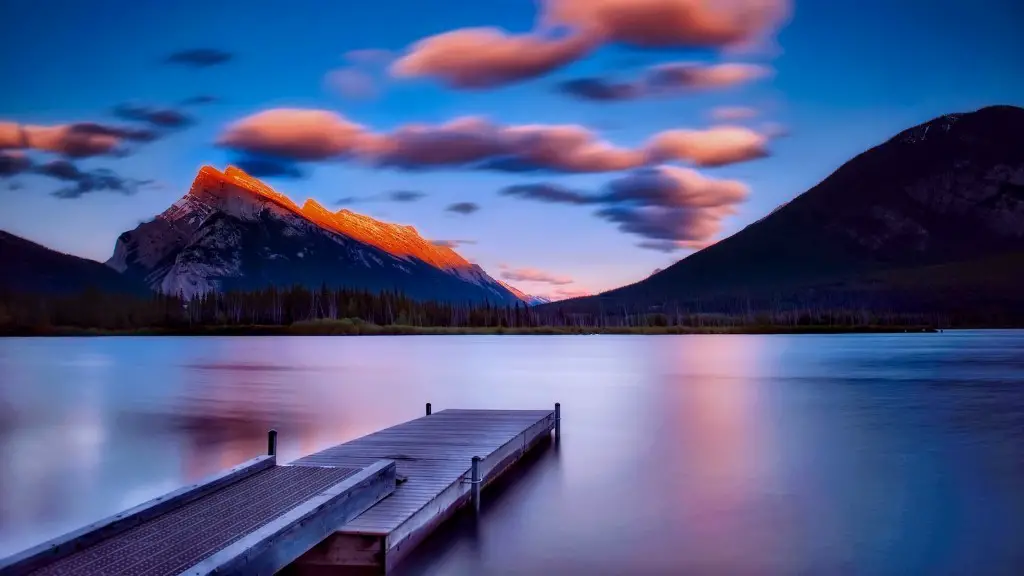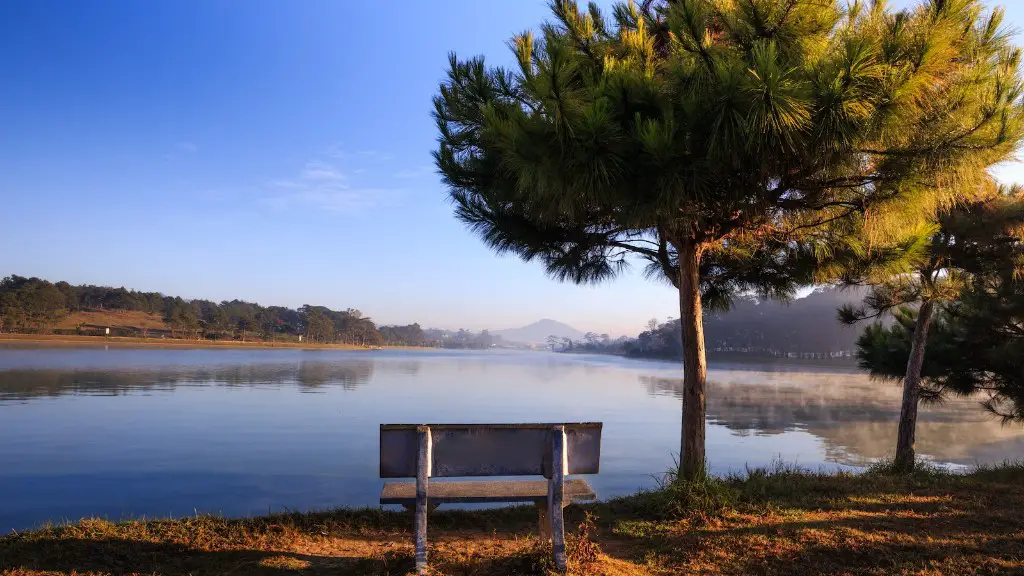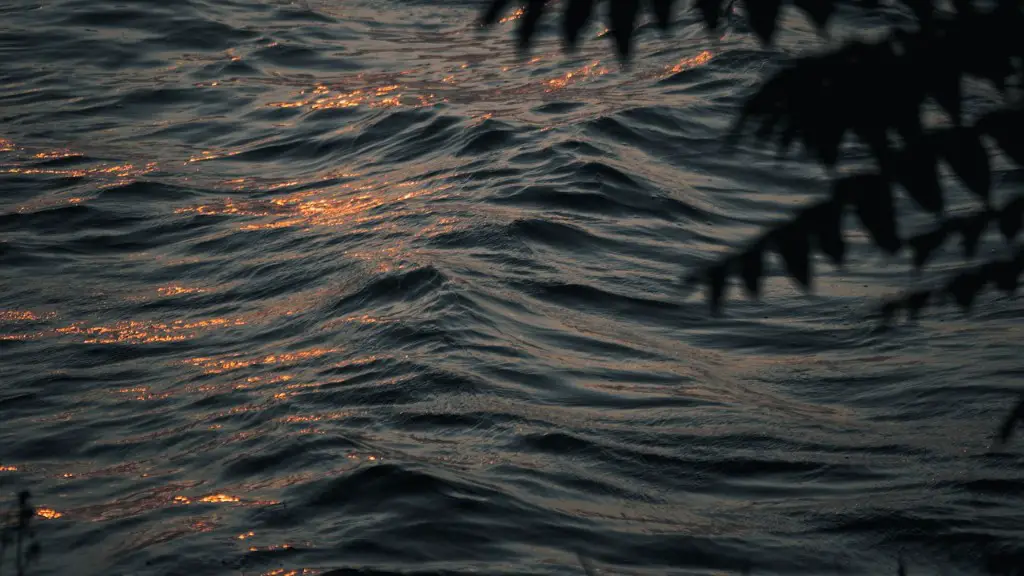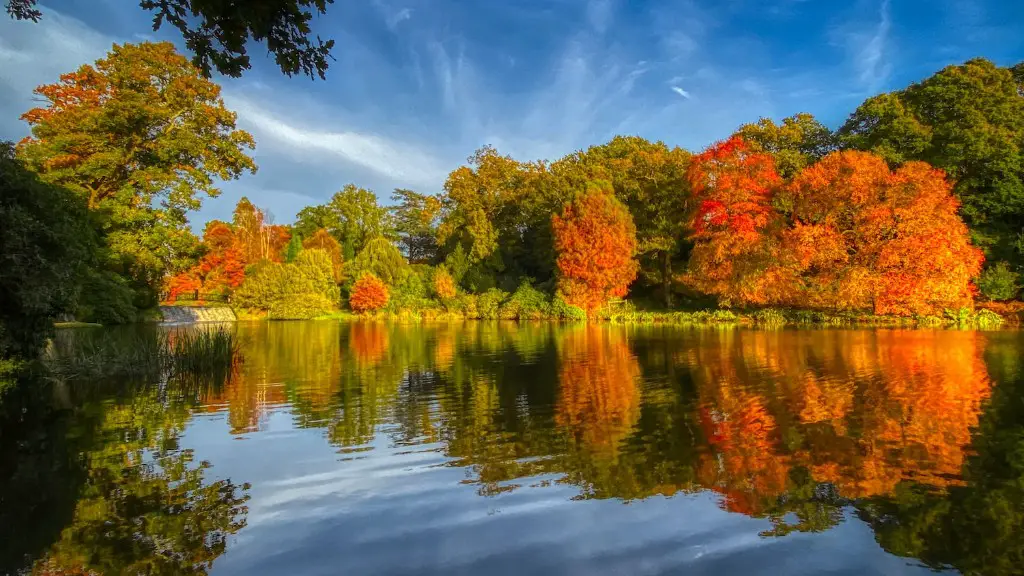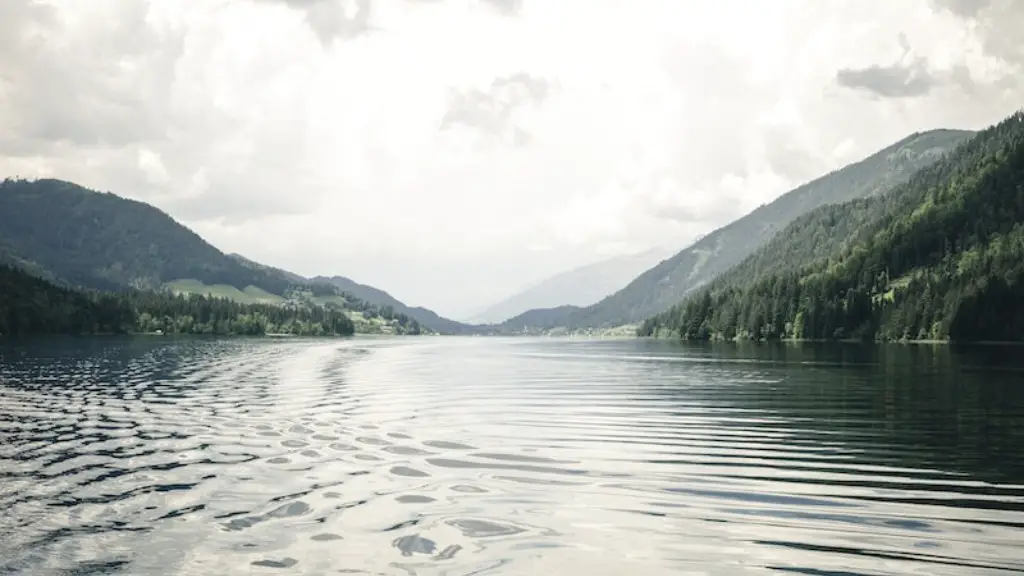Atop a shield volcano in the Cascade Range of southwestern Oregon sits beautiful Crater Lake. It is the deepest lake in the United States and is known for its intense blue color and water clarity. Crater Lake is fed only by rain and snowfall, with no rivers or streams flowing in or out. So, what is Crater Lake made of?
Crater Lake is a large, deep lake in the Cascade Mountains of Oregon. It is the rare example of a pristine caldera lake, formed by the collapse of a volcano. The lake is fed by rain and snow, and has no inlets or outlets. The water is very clear and has a deep blue color. The depth of the lake varies depending on the season. In the winter, it can be over 1,000 feet (300 meters) deep, while in the summer it is usually around 900 feet (275 meters) deep. The average depth of the lake is about 1,000 feet (305 meters).
What is Crater Lake formed by?
Crater Lake is a stunning example of the power of nature. The lake was formed by the fall of a volcano, Mount Mazama, which erupted and collapsed approximately 7,700 years ago. Today, Crater Lake is one of the most popular tourist destinations in Oregon. The lake is known for its deep blue water and stunning views.
The Crater Lake area is home to a variety of different types of volcanic rocks, each of which has its own unique characteristics. Basalt, for example, is a type of igneous rock that is typically dark in color and has a very fine grain structure. Basaltic andesite, on the other hand, is a type of volcanic rock that is intermediate in both color and grain size between basalt and andesite. Andesite, meanwhile, is a type of volcanic rock that is typically lighter in color and has a coarser grain structure. Dacite and rhyodacite are both types of volcanic rocks that are similar to andesite in terms of color and grain size, but are distinguished from andesite by their higher silica content. Rhyolite is a type of volcanic rock that is similar to dacite and rhyodacite in terms of silica content, but is typically lighter in color and has a finer grain structure.
Why is Crater Lake water so pure
Crater Lake is an absolutely beautiful place and it’s no wonder that it’s one of the most popular tourist destinations in the United States. The lake is incredibly deep and the water is a vibrant blue color that is simply stunning. The lake is also incredibly clean and clear, which is a testament to the National Park Service’s dedication to keeping it that way.
The park’s water claim for the lake is for the preservation and protection of all natural habitats and the conservation of scenery. It is not for human consumption. The park wants to make sure that the lake is clean and safe for all the animals that live there.
Can you swim in Crater Lake?
Yes, you can swim in Crater Lake National Park, but there is only one place where it is safe and legal to do so. The Cleetwood Cove Trail usually opens mid to late June and is the only place where swimming is allowed.
Crater Lake is famous for its deep blue color. The water gets its color from the way sunlight reflects off of the particles in the water. These particles are very small, so they scatter the sunlight in all directions, making the water look blue. The water in Crater Lake is also very clear.
Is Crater Lake a live volcano?
Crater Lake is an active volcano, but it is not currently in danger of erupting. The last eruption occurred 4,800 years ago, and experts believe it is unlikely to erupt again in the near future.
The discovery of colonies of moss and bacteria living at the bottom of Crater Lake perplexes researchers because almost no nutrients are at the bottom of this nearly 2,000-foot lake, yet these organisms are thriving. This is an interesting find that could lead to further discoveries about the capabilities of these organisms and how they are able to survive in seemingly impossible conditions.
Could Crater Lake erupt again
The long history of volcanism at Mount Mazama, the volcano that houses Crater Lake, suggests that this volcanic center will be active in the future. Future eruptions will likely occur within the caldera and probably beneath the water’s surface. This is a potentially dangerous situation for the millions of people who visit Crater Lake National Park each year.
Crater Lake is one of the most beautiful and cleanest lakes in the world. It is located in Oregon, USA and is fed by no streams or rivers, making it one of the clearest lakes around. Visitors can see up to 100 feet down into the water and the sunlight permeates down some 400 feet. It is truly a stunning sight and a great place to relax and enjoy the natural beauty of our planet.
What is the clearest lake in the world?
The pictures of the world’s clearest lake are absolutely stunning! The lake is a deep blue and the visibility is incredible. The reports of the scientific verification of the visibility are very impressive. It is amazing to think that there is a place on Earth where the water is so clear.
Crater Lake is one of the snowiest places in America, with an average of 43 feet of snow per year. This makes it difficult to swim at Crater Lake, as the water is usually only accessible from June to September.
Are there any fish in Crater Lake
The lake was stocked with seven different species of fish between 1888 and 1941, only two of those species thrive today. It is currently estimated that the lake supports approximately 60,000 kokanee salmon and rainbow trout.
To get to Crater Lake, follow the signs and the crowds across the road and to the top of the trail. From there, you can descend 700 feet in just over a mile to the shores of the lake. This is the only place in the park where you can legally and safely get down to touch the water.
What’s the deepest lake in the US?
At 1,943 feet (592 meters), Crater Lake is the deepest lake in the United States and one of the deepest in the world. The average depth of Crater Lake is 1,148 feet (350 meters). The maximum depth of the lake is 2,148 feet (655 meters).
The Common Garter Snake is a small to medium-sized snake that is found throughout North America. It is a very common snake and is often seen in gardens and yards. The Common Garter Snake is non-venomous and is not considered to be a dangerous snake.
Conclusion
The lake is formed in the caldera of Mount Mazama following the collapse of the mountain’s cone after a large eruption about 7,700 years ago.
The crater that now contains Crater Lake in Oregon was formed around 7,700 years ago by the collapse of the summit of Mount Mazama following a large volcanic eruption. The Klamath Native Americans have long considered Crater Lake to be a sacred site. The unblemished water is spectacular in its deep blue hue, and the surrounding forests and mountains provide an impressive backdrop. Crater Lake is the deepest lake in the United States and is fed solely by rain and snowmelt. The clarity of the water and the lack of pollutants make it one of the most pristine lakes in the world.
